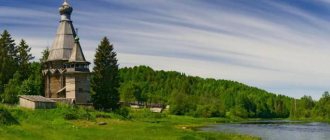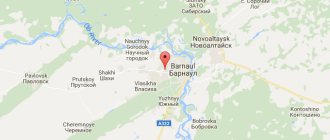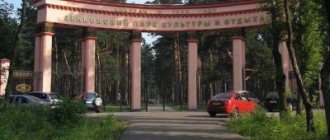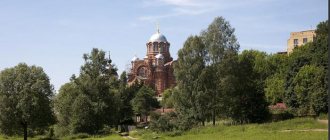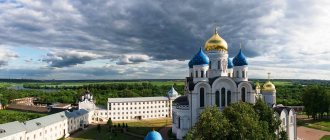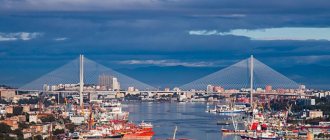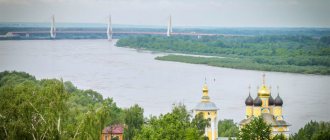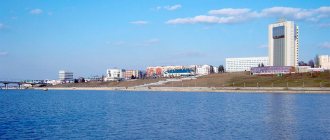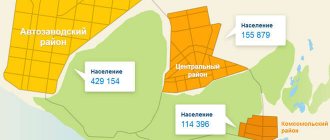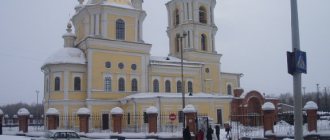History of the city
Archaeological excavations indicate that a human settlement existed on the site of present-day Cheboksary back in the 13th century.
The first chronicle mention of the Chuvash-Bulgar settlement dates back to 1469. And since 1555, in its place there was already a supporting fortress of Moscow Rus'. Its creation is attributed to Ivan the Terrible. This fortress was a reliable defense on the southern borders of Rus'. Only two centuries later Cheboksary turns into a city. This happened thanks to the development of trade, which was facilitated by the Volga River. Bread, salt, furs, honey, leather raw materials - all this was traded by lively Russian merchants. At first the city was assigned to the Kazan province. However, already in 1781 it became an independent county town.
Historical information
In Russian chronicles, the settlement has been mentioned since 1469 in connection with the campaign of governor Ivan Runa to Kazan. However, settlements appeared here much earlier, as evidenced by numerous archaeological excavations. Despite some historical facts, 1469 is considered to be the year the city was founded.
The population of Cheboksary began to increase significantly after the 1917 Revolution. New educational institutions and factories began to appear in the city. All this could not help but attract people from neighboring settlements. The birth rate has also increased. Modern Cheboksary is a city that is developing rapidly. The population continues to increase today.
Cheboksary: which region of Russia has taken the city under its “wing”
At the beginning of the 20th century, Cheboksary turned first into the center of the Chuvash Autonomous Region, then into the capital of the Chuvash Autonomous Soviet Socialist Republic. Finally, in 1992 - to the capital of the Chuvash Republic.
So the question is: “Cheboksary – what region of the Russian Federation?” - not entirely correct. Because Chuvashia is a republic that is part of the Russian Federation, which has not only its capital Cheboksary, but also its own Constitution, coat of arms, anthem...
It is located in the center of the European part of Russia. The closest regions to the city of Cheboksary are the Nizhny Novgorod region (in the west), as well as the Ulyanovsk region (in the south). It borders on the Chuvash Republic of Tatarstan, Mordovia and the Republic of Mari El.
By the way, Chuvashia, like Cheboksary, is home to the largest number of indigenous people, that is, Chuvash. There are two thirds of them in the republic, and 65% in the capital. The entire population of Cheboksary is 468 thousand people.
To finally close the question of the location of the city, it is worth saying that you can still find the following address on the map of Russia: Cheboksary, Tambov region. Just for clarification, it is necessary to insert the Nikiforovsky district, and write the village before the word Cheboksary.
Crime
It’s strange, but Cheboksary has always been a fairly calm city. Yes, of course, there is robbery and murder, but they are usually of a purely domestic nature. Drunken kitchen quarrels and fights can end disastrously. But there is no rampant crime in the city. Such a popular system of the 90s as “protection protection” for businesses was practically absent in the city. The capital of Chuvashia lived peacefully and calmly. Well, of course, “district-to-district” showdowns were popular among the younger generation, when crowds of hundreds flocked to a meeting somewhere. However, there were always no deaths. Fights, yes, but not to the death. They were probably afraid. The townspeople have always had a strong belief that the police bravely protect the peace and well-being of people. Maybe because every 10th resident of Cheboksary was involved in law enforcement agencies. The statistics remain to this day.
What our wonderful city has become famous for is its regular economic criminal cases against the heads of large enterprises, plants and factories. Moreover, they were initiated by the former head of the republic, the former Minister of Justice of the Russian Federation. Cases were opened against almost each of the leaders, some were imprisoned, others had already been released. It all started with attempts to declare the privatization of enterprises illegal, then, according to a well-established scheme, the organization was seized, an external manager was appointed, assets were withdrawn and the vacated land and buildings were sold. The very first high-profile case was the collapse of KhBK. And then came the resale of the remaining enterprises. And so, the city is calm, in the evenings there are police patrols, even without dogs, and you won’t even hear the rustle of a flying bullet. Boring, quiet, splendid.
What is Shupashkar?
It turns out that the Chuvash themselves call Cheboksary by this name. By the way, there are two official languages in Chuvashia: Chuvash and Russian.
Translated from Chuvash into Russian, it means “wooden gutter.” True, as to why such a name arose and what was the reason, the opinion of the local population differs. However, it agrees that this chute is from a water mill. Just which one: the one through which water flows, or the one through which flour is poured?
However, there are more scientific explanations for the meaning of the word “shupashkar”. One of them is “a Chuvash settlement” (from “Chepe Suar”), the second is “fenced by water.” Indeed, in ancient times the city was completely surrounded by water. On one side - the Volga, on two sides - the Cheboksary River, in those days a high-water river, on the fourth side the city was protected by a wide ditch, also filled with water.
Federal District Cheboksary
As an administrative-territorial center, Cheboksary, in addition to the city itself, includes 4 more populated areas, 2 of which are rural. Subordinate urban-type settlements include: New Lapsary and Sosnovka. Subordinate rural settlements include the following villages: Severny and the village of Chandrovo. At the same time, Chandrovo is administratively subordinate to the Moskovsky district of the city of Cheboksary, and new Lapsary is subordinate to the Leninsky district.
As a federal district of Russia, Cheboksary has 3 administrative districts:
- Kalininsky;
- Leninist;
- Moscow.
Cheboksary has the status of an urban district and municipal entity. Management here is carried out by the head of the city administration, who is elected during general elections for a 5-year term.
Location Cheboksary
Undoubtedly, the area surrounding Cheboksary is distinguished by its color and beauty. This settlement is still surrounded by water. Volga River, Cheboksary Reservoir, Cheboksary and Kaibulka Rivers. It is in the valley of the latter, on an area of 233 square meters. km is located today the city of Cheboksary. What region of Europe can boast of such a geographical position?!
In addition, the city’s territory has a picturesque topography, cut by ravines and covered with hills, so it is characterized by changes in elevation, a large number of green areas (entire pine and broad-leaved forests), breathtaking panoramic views of the Volga River, and cozy valleys of small rivers. Indeed, in addition to the above-mentioned ones, Sugutka, Kuvshinka, Trusikha and Malaya Kuvshinka also flow here. By the way, such ravine-hilly terrain necessitated the construction of bridges. There are five of them in Cheboksary, through which communication is provided between various city districts.
Administrative structure and authorities
The city includes three administrative districts - Moskovsky, Leninsky and Kalininsky. The population of Cheboksary cannot be considered without taking into account the administrative features of the city. The largest is the Moskovsky district. More than 200 thousand people live here. It is here that the largest industrial enterprises are concentrated, so the environmental situation is not the best. Kalininsky district covers the eastern part of the city. About 156 thousand people live here. The area is characterized by well-developed infrastructure. The Leninsky district is the smallest in terms of population. 134 thousand people live here.
The head of executive power in Cheboksary is the mayor. He is elected in municipal elections. Another important formation of city government is the city meeting of deputies. It is this body that regulates the economy of Cheboksary. In addition, decisions regarding the education and health of the local population are made at the meeting.
City climate
A temperate continental climate is characteristic of the city of Cheboksary. Which area has the same climate? A significant part of the European part of Russia.
Snowy and frosty winters with an average temperature of minus 12-14 degrees can last four to five months. Snow cover can persist for a long time. The summer months are mainly characterized by temperatures of plus 19-21 degrees, although sometimes it can be much hotter. During the off-season, the weather is unstable. Rain falls mostly in the summer, from June to September.
The climate is characterized by relatively high humidity, this is caused by the proximity of the Volga. However, evaporation can often exceed precipitation, and then heat sets in.
Transport network
The main role in the transport communication of Cheboksary belongs to road transport. Thanks to the developed network of highways, 85 percent of passenger and freight traffic is accounted for by this type of transport.
The strongest railway connections have been established with Moscow and St. Petersburg. In summer, trains also run to Adler and Novorossiysk.
From public transport, trolleybuses, buses, minibuses and individual taxis run along the city streets. There is a possibility of a light rail in the future.
The most beautiful place in Cheboksary
In 1987, a hydroelectric power station was built in Cheboksary, and with it an artificial bay appeared on the site of the old city district. It has become a place of cultural recreation for residents. There is a pedestrian bridge across the bay, along which many townspeople always walk.
Few of the old buildings near the bay have survived. The Vvedensky Cathedral is of greatest interest - it is the oldest temple in Chuvashia. There was a charter from Ivan the Terrible dated 1555, according to which the cathedral should be built. And it was built in the 1660s. It is a white stone church. Inside, frescoes from the time of construction (17-18 centuries) and an iconostasis have been preserved. The cathedral also houses the first icon of the Chuvash people - Our Lady of Vladimir, dating back to the 15th century.
On the shore of the bay, such ancient monuments as the Church of the Assumption of the Blessed Virgin Mary (1763) and the Trinity Monastery (17th century) look very beautiful. The latter is a whole architectural ensemble.
More than 25 temples and religious symbols are concentrated in the city of Cheboksary. What region or region of Russia can be proud of the fact that their capital has such an abundance of religious monuments? Moreover, most of them were built in the 16th-18th centuries.
In 1996, another dam was built across the Cheboksary Bay, which ran from Kazanskaya to the Istoricheskaya embankment. It began to be called “The Road to the Temple.” Soon new modern buildings appeared here, and the surrounding area of the bay was improved. Multi-level stairs, bridges, fountains...
Districts and real estate Cheboksary
Officially, the city is divided into four districts, one of which is located on the left bank of the Volga River and consists of a number of small villages, camp sites, cordons and sanatoriums. Getting there is not very convenient - either by public and private transport via hydroelectric power stations at any time of the year, or by trams and ferry in the summer. You won't be able to swim - it's too far. There is no bridge - it is expensive to build. The remaining areas are separated by bridges. The breakdown in numbers is approximately as follows:
Kalininsky district - 150 thousand, Leninsky -123 thousand, Moskovsky -184 thousand people. The Volga region has about 12 thousand.
Map of Cheboksary districts
As you can see on the map, each of the four districts is divided into several more territories, which, however, bear quite official names. However, this is not all. Each of these districts is still divided into small territories, which received their names in the fascinating and turbulent 90s, when the so-called “boy” groups existed in the city, strictly guarding their halo of habitat. Many of them ceased to exist long ago, but the names remained in the minds of the townspeople. The “boys” have matured, put on suits, ties, some even cufflinks, but they still remember where their homeland is and whose blood they will be from.
The Moscow region is considered the most respectable. At least, the cost of housing here is the most expensive in the city, except for new houses in the center and a number of elite houses in the KhBK area. The average cost of a residential square meter in the Moscow region varies from 35 to 55 thousand rubles. It all depends on the type of building and location. The most expensive squares are in the area of Historical Hill or, as people say, Brick (there is an old brick factory on this territory), as well as in the North-Western microdistrict in the territories called Volzhsky-1, Volzhsky-3 and st. Talvira. The first president of Chuvashia lives here with his former officials, as well as the current nomenklatura fraternity and large businessmen.
New buildings in the Moskovsky district
There is a small village with large cottages called New Village. The cost of a land plot of 15 acres can reach up to 35 million rubles. The area of the former hippodrome, now the intersection of Moskovsky Prospekt and st., is also considered prestigious. Afanasyeva. There is practically no industry in the Moscow region, with the exception of the instrument industry, which produces units for avionics. The plant not only remained afloat, but also successfully replenishes the city’s treasury.
As for other parts of the region, they are significantly inferior in prestige to the North-West. True, it is worth noting that the South-Western region is distinguished by fairly decent houses in architecture and layout. However, the distance from the center and the Volga makes housing relatively inexpensive. About 30-35 thousand per square meter. Young families live here who have taken out a mortgage and are successfully paying for it. And also businessmen who managed to earn money for a two- or three-room apartment in two or three years. The place is quite comfortable.
As for the Chapaevsky village, it is a very interesting place. Built around the plant. Chapaev, he preserved the amazing atmosphere of provincial architecture. Many of the houses were built by German prisoners of war, which makes them incredibly cute. Everyone here knows each other. There are many elderly people who take special care of their flower beds and front gardens. Old engineers and designers who settled in the city after the construction of the plant began live here. They love and value their area. However, this area is popularly called the Village. The most desperate bandits and hooligans were from here. The city at one time was in awe of the “villages”.
Chapaevsky village
Leninsky district is a rather motley sight. The Center microdistrict is Karl Marx Street with administrative buildings and Republic Square, as well as the pearl of the city - the Bay - beautiful, clean and green.
Leninsky district
Everything else is essentially a ghetto. Bogdanka is an old two-story barracks, with amenities on the street and wood sheds, which are used both as warehouses and for their intended purpose. The only area in the city where you don’t want to not only live, but also just stop by on business. And there can be no business there. The road to the main city cemeteries runs through Bogdanka.
Dilapidated houses are a common sight on Bogdanka
True, the city has a development plan for this area. New houses began to appear, infrastructure was developing. People are waiting for changes and rejoicing at the emerging prospects.
Geographical center of the city
As for the Kalininsky district, it also consists of sectors with different quality of life.
The KhBK microdistrict is considered one of the most prestigious. This is due to both the location and those who settled here. Directors of large factories - active and not so much, ministers, the new head of the Republic, they all live next door. We can say that this is the cleanest and most well-groomed area of the city. Evenly trimmed linden trees, beautiful flower beds, repaired roads, constant lighting - all this pleases the inhabitants of the area. It should be noted that some of the houses here resemble the Chapaevsky village in their architecture, only they look like the houses of a German suburb - picturesque and alluring. Very good area. And since, thanks to the activities of the former president, the Cotton Mill ceased to exist, next to the area there is one of the largest shopping centers in the city, Mega Mall, located in industrial buildings.
But the most important attraction of the area is Victory Park. Blue spruce trees and an unforgettable view from the highest point of the city allow the inhabitants of this closed little world to enjoy peace and well-being.
View from Victory Park
Perhaps the most expensive real estate is here. Some apartments cost about 12-15 million rubles. True, their area is corresponding from 150 to 350 square meters. There are also small apartments. They are much cheaper. But it is extremely difficult to buy housing here.
Not far from this oasis of well-being are the districts “Chulochki” and “Agregatki”, in other words, the districts formed thanks to the Hosiery and Knitting Factory and the Aggregate Plant. These are working-class areas. Living here is not prestigious, but it is inexpensive. The bulk of visitors from villages settle here. It was so 40 years ago, and it is so now. The houses for the most part are brick buildings of 4-5 floors from the Khrushchev period of our history. There are many hostels built for working youth, who, having matured significantly, stayed to live here. A lot of everyday alcoholism and family dramas. However, children are having fun in the courtyards. The neighborhoods are noisy and fun. It is here that all the local district punks fear the watchful old women who stand guard over public and personal morality.
As for the New South district, it is the largest and most populous in the entire city.
Novo-Yuzhny
Built for the workers of the Tractor Plant, the area began to grow rapidly. Initially, young and not very specialists who came from all over the USSR lived here. They brought the wind of freedom, glimpses of a new mind, the smell of unprecedented dishes and forbidden literature. Engineers, chemists, metallurgists and techies, so attractive in the seventies, have firmly established themselves in this young part of the city. As time went. The plant needed a lot of new labor, and the area acquired new residents. The same young, as strong and healthy workers as the first wave of migrants. But they spoke mostly Chuvash and did not know who Feuerbach was. But they knew that the plant would certainly provide them with housing and good wages.
And the Tractor Plant did not deceive them. New houses were built, wide avenues ran through, and infrastructure was developed. Today's New South district is an area of fast monolithic houses, not very expensive shops and an incredible number of residents. Inexpensive, fun, noisy. As a rule, residents living here, when going to the Center or the North-Western region, notify their family, saying that they are “going to the city.”
The symbol of the city
In 2003, a 46-meter sculpture of the Patron Mother was erected on a hill next to the Historical Embankment of the Cheboksary Bay. On a granite pedestal stands the figure of a woman in Chuvash national clothing. The woman has her arms outstretched, she is ready to hospitably welcome everyone here. This gesture also symbolizes patronage of people and the city. At the bottom of the monument there is an inscription in Russian and Chuvash languages, it calls people to peace and love.
The monument to the Patron Mother has become a symbol of the city of Cheboksary. What an area of indescribable beauty is visible when you climb up to the monument! After all, he stands on a hill. The bay, the Volga, awash of churches, fountains, green parks...
Transport
The population of Cheboksary is considerable. It is no coincidence that the transport sector is well developed here. There is a river port, a railway station, and an airport. From the locality you can reach many Russian cities without transfers. The road network is also well developed here. More than 80% of all cargo transportation is carried out by road transport.
There is a high-quality railway connection from Cheboksary to Moscow. Walks on a regular basis.
Urban transport is also well developed in the village. The Cheboksary trolleybus first began operating in 1964. Then transport ran from the railway station to the city's Red Square. There are now more than 20 routes. The fare is 18 rubles. There are also regular buses and minibuses in the city.
City of green spaces
There really are a lot of green spaces here, i.e. parks and squares planted and arranged by people. In addition, significant areas of Cheboksary forests have been preserved. Whatever area of the city is not subject to close attention, green areas can be seen everywhere. Their total area is 7634 hectares.
Citizens and guests love to walk in Victory Park, named after the 500th anniversary of Cheboksary, “Lakreevsky Forest”, and in the Nikolaev Children's Park. Walks through forests with interesting names take on special charm: Berendeyevsky Forest, Guzovsky Grove, Obikovsky Forest and others.
The square named after Chapaev is unique. After all, it is located on the site of the village of Budaiki, where this legendary hero of not only the Russian Civil War, but also the First World War was born. Vasily Chapaev was awarded three St. George's crosses.
A monument to Chapaev has been erected in the park, and a memorial museum has also been opened, where you can learn about the exploits of the hero, his comrades-in-arms, and the division. Chapaev’s childhood home is even located in the park. However, it took effort and time to find him, because in 1912 he was sold and taken to another area.
The square is very green, about 400 trees and a large number of shrubs are planted here. Many paths have been laid, along which many benches have been built and fountains built.
Population
As of 2021, the population in Cheboksary is 489,498 people. According to this indicator, the city is in 38th place in Russia. However, such a number of people did not always live in the settlement. Rapid growth has been observed since 1917. According to data for 1913, only 6,700 people lived in the settlement. Already in 1926 the figure increased to 9 thousand people. A real demographic boom was observed from 1959 to 1967. During this time, the population growth amounted to about 100 thousand people. The number of people living in the city continues to increase today. The birth rate significantly exceeds the death rate.
The national composition of Cheboksary deserves special attention. More than half of the population are Chuvash (about 62%). The Russians are in second place. In addition, Ukrainians, Poles, Germans, Tatars, Gypsies, Belarusians, etc. live in the city.
Museums in Cheboksary
In addition to the Chapaev Museum, there are many other interesting institutions in Cheboksary. For example, the National Museum, which will tell about the history, life and culture of not only the ancient Chuvash, but also the present.
At the Tractor History Museum you can see a collection of tractors. Why tractors? In Soviet times, the Cheboksary Tractor Plant produced large quantities of this equipment and supplied it to a huge country. Now OJSC Cheboksary Industrial Tractor Plant has significantly reduced both its production space and production volumes. And yet, even today it is a fairly large enterprise where residents work.
The beer museum with its varied collection is interesting. It can rightfully compete with museums in the Czech Republic and Germany. Among the exhibits of interest are all kinds of beer vessels, barrels, bottles, mugs, brewers’ tools and much more. After viewing the exhibition, it is undoubtedly worth heading to the tasting room. After all, it’s impossible to visit the beer museum without trying this wonderful drink.
Of course, there are other museums in Cheboksary, but about them another time...
After such an extensive excursion into the history and modernity of the capital of Chuvashia, one can hope that for many the question is: “In what region is Cheboksary located?” cleared up.
Education
There are more than 30 general education institutions in the city, and many public and private kindergartens. The problem of placing a child in a preschool institution is not acute in most families. However, in order to get into a specific kindergarten, you must join the electronic queue.
Great attention is paid to the employment of the population of Cheboksary. It is no coincidence that the administration fully supports higher educational institutions, where students are trained in various professional areas.
A lot of good reviews can be heard about the Chuvash State Institute of Culture and Arts. This budget educational institution was founded in Cheboksary in 2000. Nowadays, guys who want to become directors, actors, vocalists, choir directors, etc. can undergo training here.
Chuvash State Pedagogical University produces professionals in the educational field. The institution was founded in 1930. Not only children from Cheboksary, but also residents of neighboring regions are trained here.
